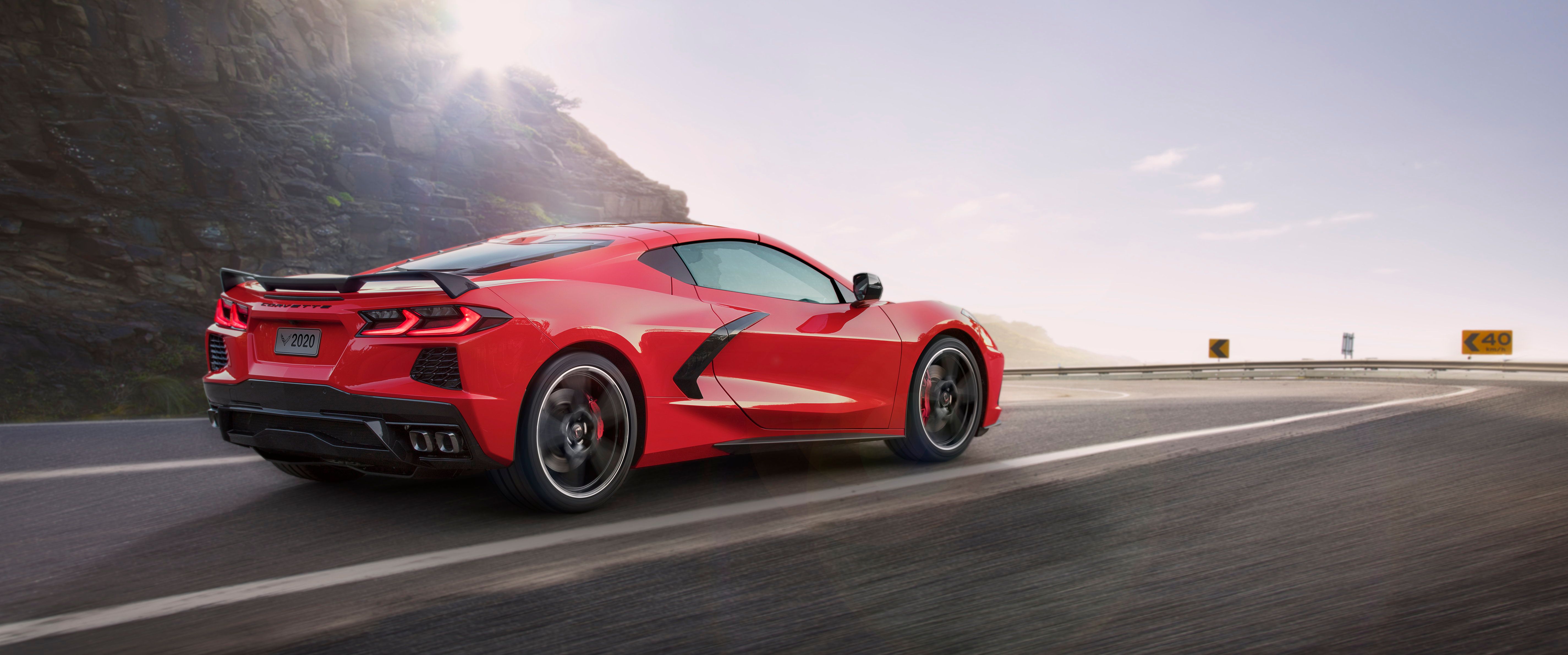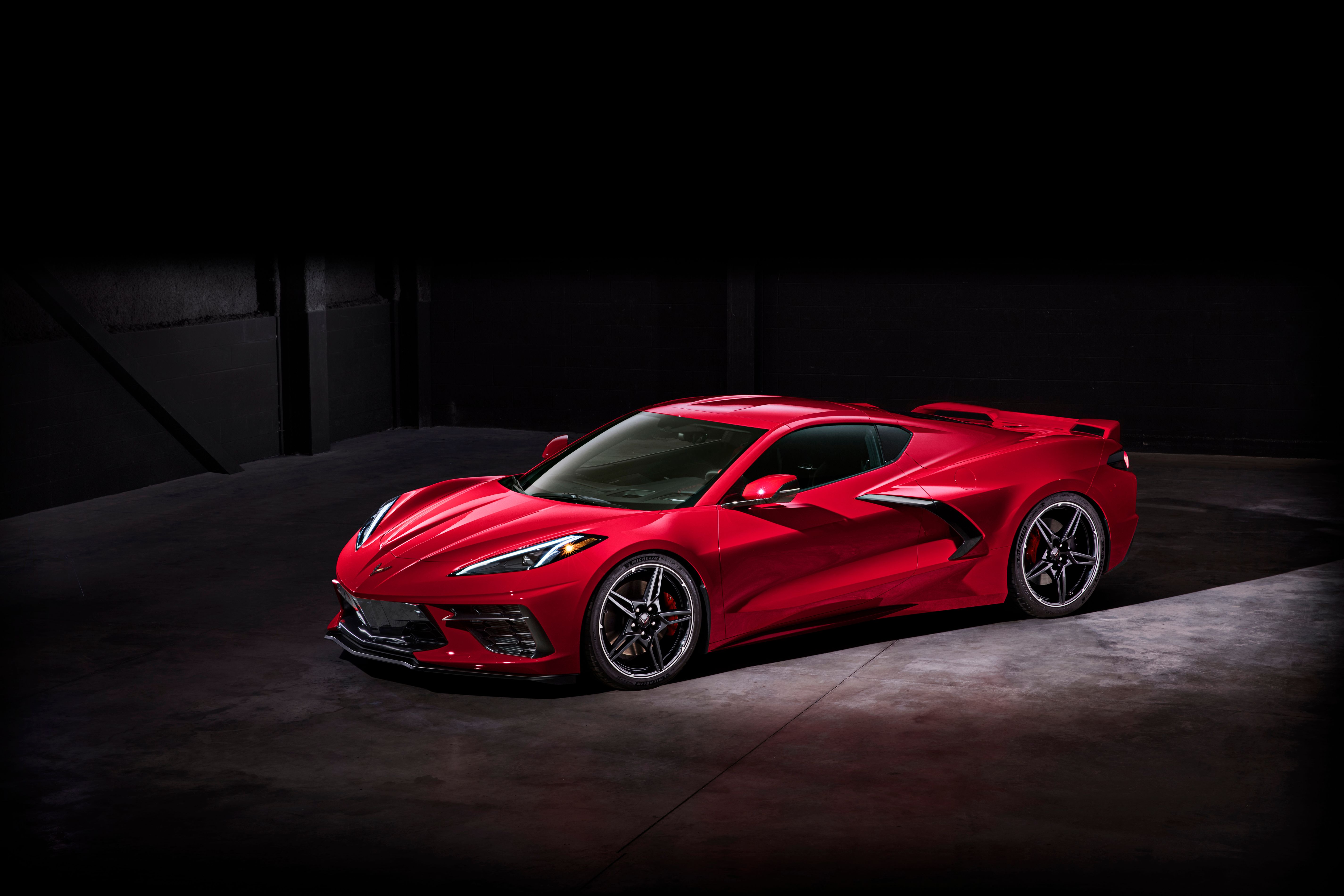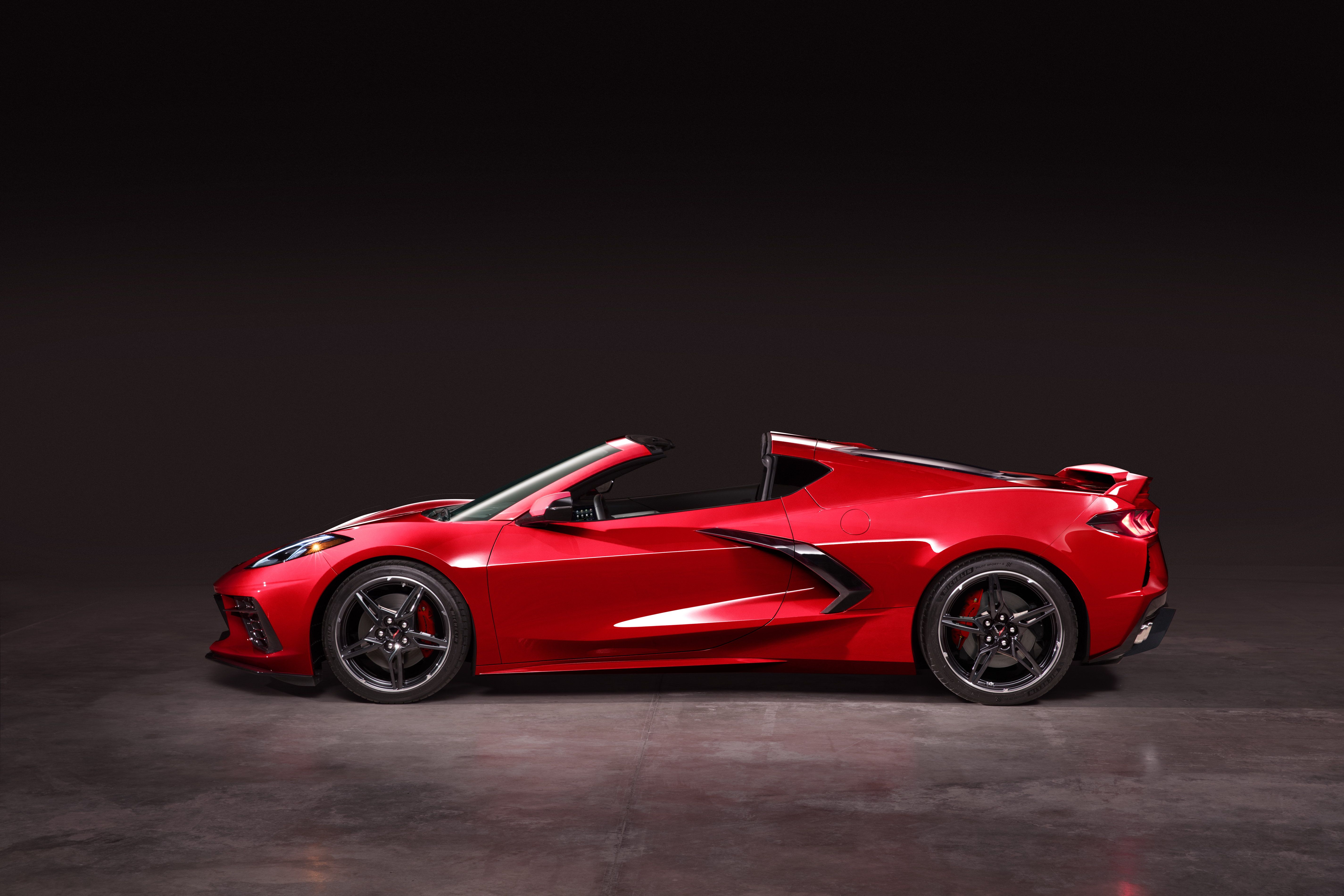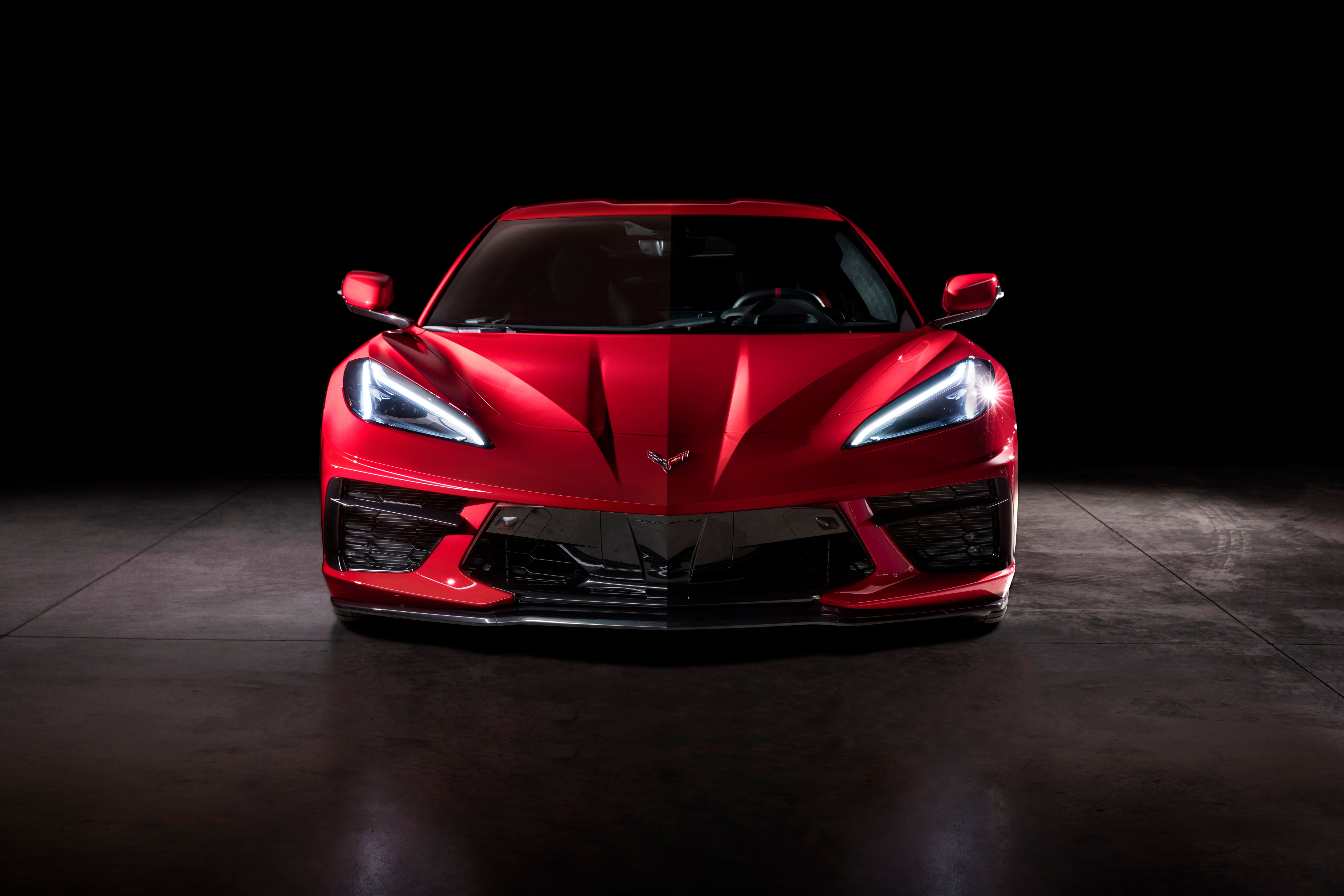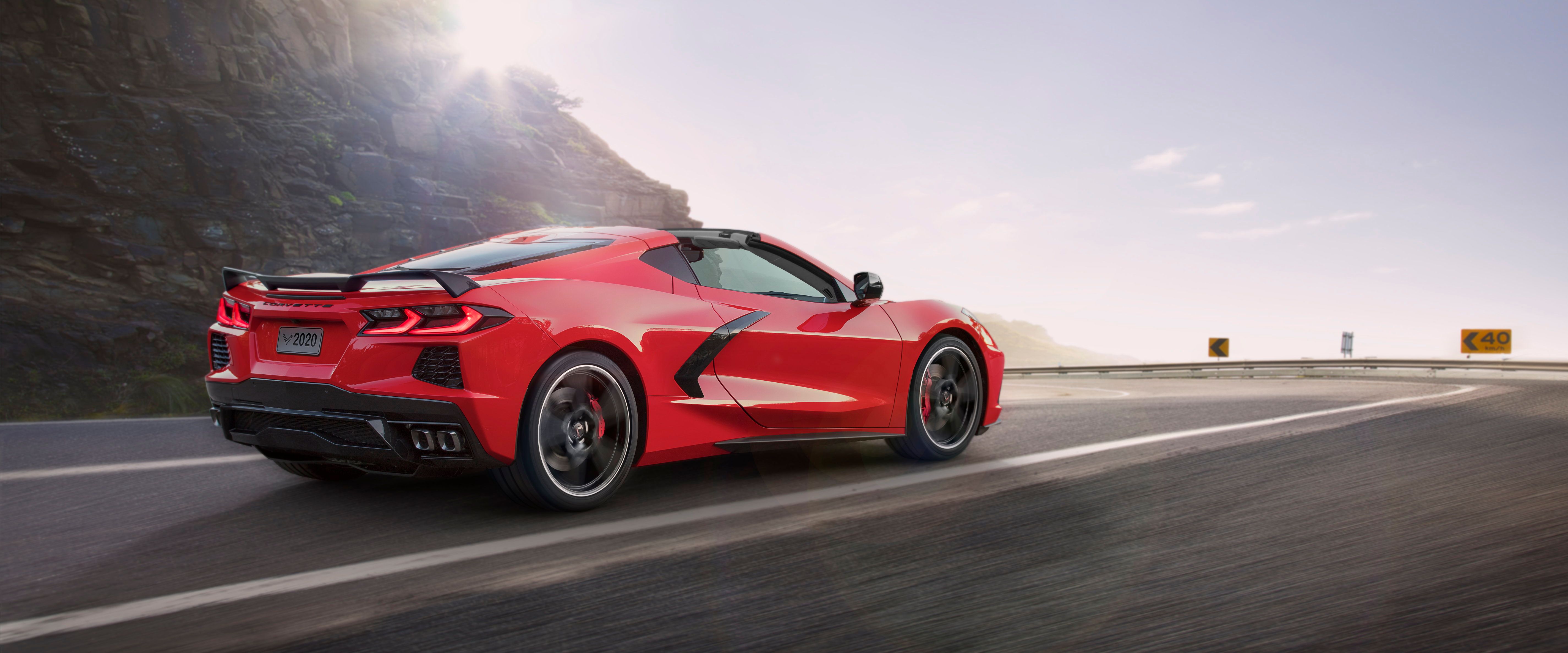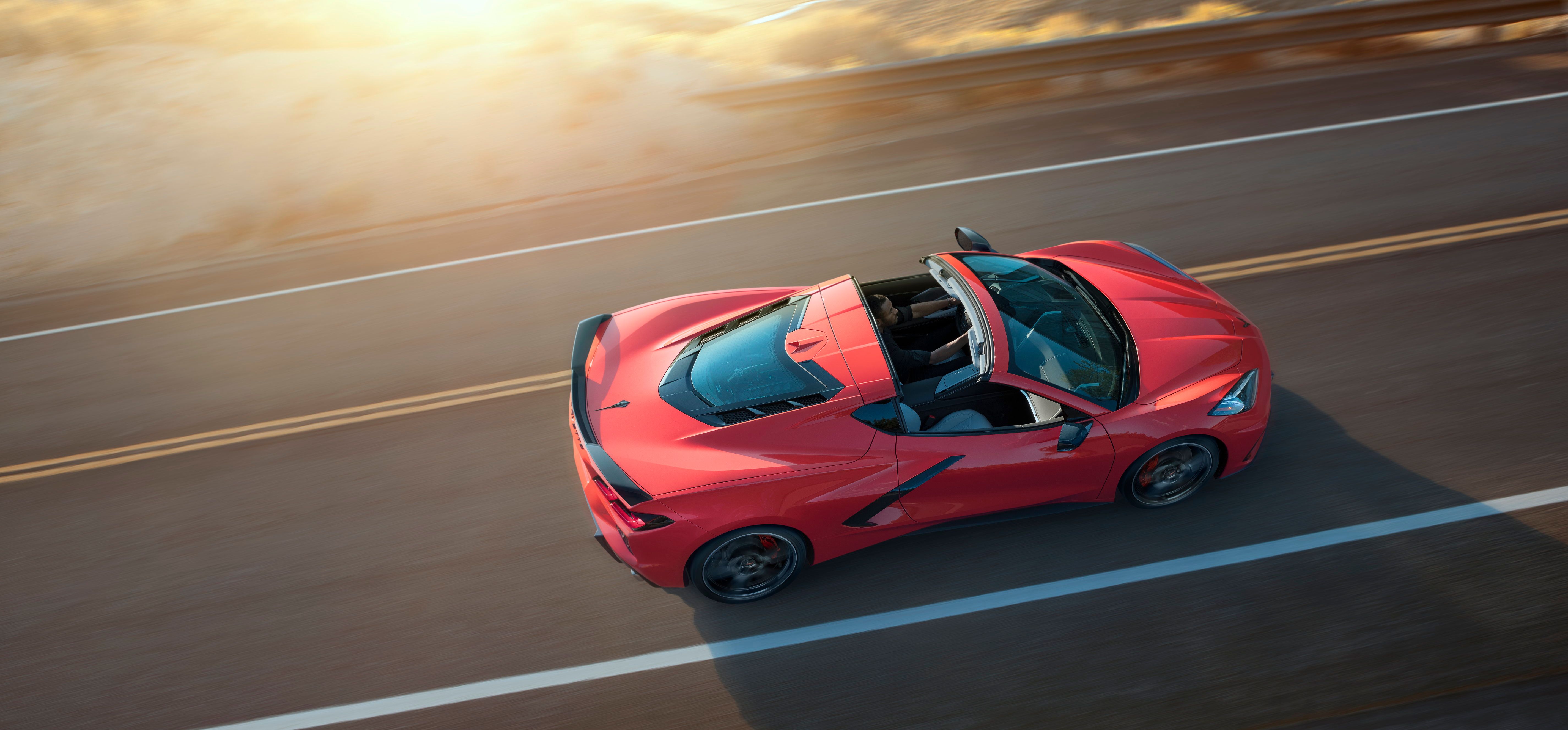The 2020 Chevrolet Corvette Stingray may be the base model of the eighth-generation of Chevy's legendary grand touring sportscar but its performance figures already suggest that 'America's Sportscar' should be soon renamed to 'America's Supercar'. The Stingray impressed us already with its practicality, its styling, and the fact that it's mid-engined to begin with - given that GM's been considering and working behind the scenes on a mid-engined Corvette for over 50 years.
More recently, GM proved it can keep a promise when it announced that the Stingray's MSRP will slot just under the $60,000 mark making the new 'Vette an absolute bargain. Now we know for sure this is an absolute bargain that can hit 194 mph and we're impressed once more. Remember, that's about as much as a Ferrari F430 Berlinetta that cost a whopping $186,925 when introduced in the U.S. some 15 years ago and, of course, the Z06 and ZR1 that are just around the corner will easily surpass 200 mph.
The Corvette simply gets quicker and quicker
Little over 30 years ago, a Corvette C4 equipped with the sturdy but otherwise lackluster L98 V-8 that cranked out 240 horsepower when new, would need over six seconds to reach 60 mph from naught and would never surpass 150 mph, no matter how much straight road you had at your disposal. To put it into perspective, for over two decades, most German executive cars have been limited at 155 mph although many can easily go a lot faster. You can argue that the mid-to-late '70s and early '80s Corvettes were plagued by all of the emission regulations that effectively sucked the life out of many otherwise respectable engines but we've got emission regulations now too and they're tougher than they were back then.
We introduced the topic of the C8's real top speed with a little throwback so as to illustrate how far we've come and how far the cars we see and drive have come too - in the performance department but also just about anywhere else too.
So, the C8 is powered by the 6.2-liter, naturally aspirated LT2 V-8. The LT2 is a relative of the C7's LT1 and features a new block and vent system, a crankshaft that sits an inch lower to the ground, a low-profile oil pan for reduced mass, and an oil cooler with 25-percent greater capacity than the C7’s." In standard trim, the engine delivers 490 horsepower and 465 pound-feet of torque. Go for the optional Z51 performance package that includes the performance exhaust and you'll get an extra five ponies and five pound-feet of torque. That's 40 horsepower and 10 torques over what you'd get in the base model C7 Stingray. That's enough to negate the C7's slight weight advantage (the last front-engined 'Vette tips the scales at 3,347 pounds while the C8 Coupe weighs in at 3,353 with the drop-top version being 102 pounds heavier).
With more power than any other base model Corvette to come before it (the C6's LS2 V-8 put out 400 horsepower and 400 torques while the C5's LS1 initially produced 345 horsepower before going up to 350 horsepower in '01), the C8 was expected to be fast. Chevy's official numbers tell the story of a fast car that's not, however, on par with the mid-engined juggernauts from Ferrari, Lamborghini or Audi - matching those established supercars should be the job of the Z06 and the ZR1. Still, the Stingray will go from 0 to 60 mph in 2.92 seconds - with the Z51 performance exhaust installed - which is marginally quicker than the official 0-60 mph time of the C7 Z06 (2.95 seconds). More importantly, however, it's almost a full second down on the basic C7's 3.8-second 0-60 mph sprint time. Having said that, you must remember that Chevy won't offer the C8 with a manual gearbox because the eight-speed dual-clutch automatic is a whole lot faster than the seven-speed manual transmission made by Tremec that features active rev-matching.
Once you've got going, you can keep it up all the way until you hit 194 mph (or 312 km/h) - or at least that's what Chevy told us. Now, a video emerged of one of the top speed runs done by the American manufacturer at the Papenburg testing facility in Germany.
In the video, you can also see how stable the car is despite it going at a considerable speed. You can guess that the engineers only kicked off the top speed runs at a time when the wind had settled down but still, it's amazing to see the driver doing almost no corrections to the wheel considering the car isn't empty either - it's carrying a passenger with a laptop and a ton of gear meant to accurately measure via GPS the car's speed so that it's all legitimate. You'll notice that in Bugatti's run, for instance, there's no passenger in that 'long-tail' Chiron Sport. It's also worth mentioning that the car used for the top speed runs is a bog-standard C8, not one fitted with the Z51 performance package as that one comes with some extra downforce that slows it down slightly. In other words, if you buy the Z51 package expecting it to make your 'Vette faster, you'll be surprised - at least as far as top speed is concerned.
Firstly, a stock C7 would never even reach 190 mph, as it tops out at 187 mph. Then there's the Porsche 991, one of the Corvette's traditional rivals. The latest 992 generation reaches about 191 mph (Carrera S version) while the standard Carrera won't surpass 182 mph (the Sport Chrono package doesn't affect top speed). The Carrera S starts at $113,900 (the 4S is more than $120,000 before you even add shipping and handling).
Then there are the faster rivals. The outgoing 488 GTB reaches 205 mph but it's expensive with a retail price of about $260,000 - the F8 Tributo doesn't have a list price in the U.S. yet but, in native Italy, you'll have to pay at least $260,200 for one. The McLaren 570 GT is also a lot more expensive at $202,000 and it's barely nine (9) mph faster. The Lamborghini Huracan EVO costs a whopping $287,400 and it's said to surpass 202 mph in a straight line. The Ford GT, Blue Oval's $450,000 halo car, is much quicker at 216 mph but it's also as expensive as seven C8s, all with the Z51 performance package installed. And yes, all of the supercars I've mentioned above are more powerful. The 488 GTB's twin-turbo V-8 cranks out 661 horsepower, Ford's EcoBoost V-6 is good for 647 horsepower, and Huracan's 5.2-liter V-10 delivers 631 ponies.
And before you mention that. indeed, the $59,950 base MSRP will be no more soon, as it's just up for the C8's first model year, we tell you it'll still be a bargain - at $53,993 - compared to its peers, no matter how much more refined they claim to be. And let's not forget the Z06 and ZR1. That's because it's not the job of the cheapest Stingray to take on the supercar world's mightiest exponents, that's a job for the faster versions (remember we were once talking about a hybrid 1,000-horsepower 'Vette?).
As recent as late last month, we were hearing that the Z06 will come packing 800 horsepower via a twin-turbo V-8 based on the Cadillac CT6-V's Blackwing. With torque claimed to be in the 700 pound-feet region, the Z06 should be a beast. And, if the Z06 will put out 800 ponies then, maybe, the 1,000 horsepower claim for the ZR1 may not be that sci-fi after all. The bottom line here is that those two versions will be massively fast - think 210+ mph fast if the GT can get to 216 mph with less than 700 horsepower under its rear lid. Exciting times ahead, everyone!
Further reading
Read our full review on the 2020 Chevrolet C8 Corvette Stingray.
Read our speculative review of the 2020 Chevrolet Corvette Zora ZR1
Read our speculative review of the 2020 Chevrolet Corvette Zora Z06

